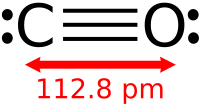
Photo from wikipedia
The different doping concentrations of lanthanum (La)-doped ZnO nanoparticles were synthesized successfully using zinc acetate and lanthanum nitrate via wet chemical method. Characterization of the prepared sample was done by… Click to show full abstract
The different doping concentrations of lanthanum (La)-doped ZnO nanoparticles were synthesized successfully using zinc acetate and lanthanum nitrate via wet chemical method. Characterization of the prepared sample was done by standard analytical techniques such as powder x-ray diffraction analysis (P-XRD), high-resolution scanning electron microscopy (HR-SEM), energy-dispersive spectroscopy (EDS), Fourier transformer-infrared (FT-IR) spectroscopy, photoluminescence (PL) and UV-Vis spectroscopy (UV-Vis), and magnetic studies (VSM). The structural analysis has been carried out by powder x-ray diffraction. X-ray diffraction studies revealed that the nanoparticles are well-crystalline and possess hexagonal wurtzite structure. HR-SEM images showed the homogenous spherical-shaped morphology of the synthesized ZnO nanoparticles. EDS analysis confirmed the presence of La ions into ZnO lattice. The band gap (Eg) energy was determined by UV-Visible spectral data, and it was found that the Eg value decreases with increasing the La concentration into ZnO lattice. PL spectra confirmed that the effective La doping enhance the UV and visible region near band gap emission. The effect of La doping on the photocatalytic activity of ZnO nanoparticles for the degradation of methylene blue dye was studied under solar illumination and the results showed that the La doping kindles appreciable degradation of MB. The optical density measurements of the ZnO nanoparticles against both gram-positive (Bacillus subtilis, Staphylococcus aureus) as well as gram-negative bacteria (Proteus mirabilis, Salmonella typhi) showed better bacterial activity than pure ZnO. Moreover, it showed that higher dopant La in ZnO exhibit efficient antibacterial activity.
Journal Title: Journal of Superconductivity and Novel Magnetism
Year Published: 2018
Link to full text (if available)
Share on Social Media: Sign Up to like & get
recommendations!